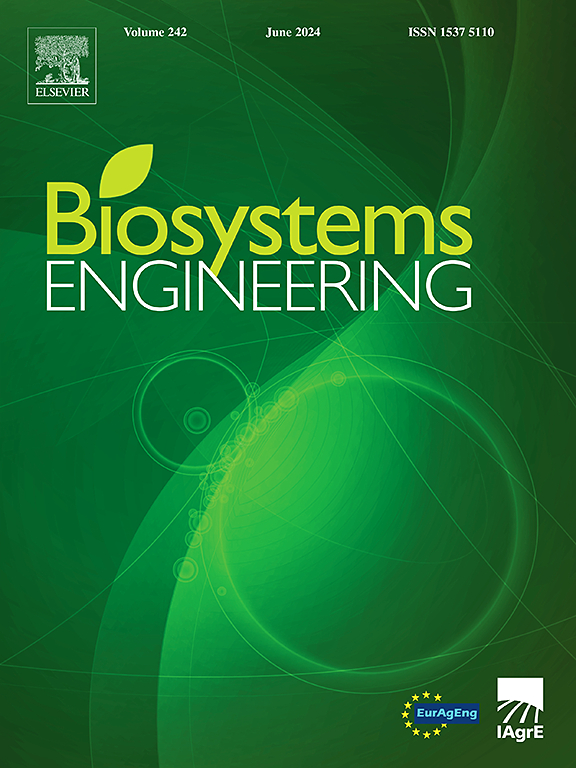Wear performance of steel plough tips on high-speed hydraulic turning ploughs
IF 5.3
1区 农林科学
Q1 AGRICULTURAL ENGINEERING
引用次数: 0
Abstract
High-speed ploughs have been commonly used in deep cultivation operations in the southern Xinjiang region. The wear of the soil-touching parts of the plough body directly affects its longevity and the effectiveness of its soil-turning work. This paper presents an experimental study of abrasive wear on high-speed plough tips in the field, the variation of wear volume, length, width, thickness, edge angle, micro-hardness, and microscopic wear surface of 30MnB5 plough tips in 0–140 ha ploughing areas are investigated, and at the same time, the wear surface penetration (Dp) is calculated to analyse the wear micro-mechanism. The results showed that with the increase of cultivation area, gradually transitioned from the initial wear stage to the stable wear stage. Dimensional changes in wear length, width, thickness, and edge angle are concentrated at the tip of the plough. The surfacing layer on the tip exhibits good self-sharpening properties. Work hardening of the plough tip overlays and bases occurs with increasing ploughed area, with lower hardness of the base material showing more flaking pits and higher hardness of the overlays material showing more grooves. The Dp value of the surface layer and the base is less than 0.2, and the wear mechanism is micro-ploughing. The holes in the surfacing layer change the motion of the soil particles, causing the microscopic wear mechanism to change from micro-ploughing to impact wear and back to micro-ploughing. The results of this paper can provide a theoretical basis for the structure optimisation and material selection of plough tips.
高速液压回转犁钢犁头磨损性能研究
高速犁在南疆地区深耕作业中已被广泛使用。犁体碰土部位的磨损直接影响犁体的使用寿命和翻土工作的有效性。本文对高速犁头进行了野外磨粒磨损试验研究,研究了30MnB5犁头在0 ~ 140 ha耕作区域内的磨损量、长度、宽度、厚度、刃口角、显微硬度和微观磨损面变化规律,同时计算了磨损面穿透度Dp,分析了磨损的微观机理。结果表明:随着种植面积的增加,土壤逐渐由初始磨损阶段过渡到稳定磨损阶段;磨损长度、宽度、厚度和边缘角度的尺寸变化集中在犁的尖端。尖端堆焊层表现出良好的自锐性。犁头覆盖层和底座的加工硬化随着犁头面积的增加而发生,低硬度的基体材料出现更多的剥落坑,高硬度的覆盖层材料出现更多的沟槽。表层与基层的Dp值均小于0.2,磨损机理为微耕。表面层的孔洞改变了土壤颗粒的运动,使微观磨损机制由微耕变为冲击磨损,再回到微耕。研究结果可为犁头的结构优化和材料选择提供理论依据。
本文章由计算机程序翻译,如有差异,请以英文原文为准。
求助全文
约1分钟内获得全文
求助全文
来源期刊

Biosystems Engineering
农林科学-农业工程
CiteScore
10.60
自引率
7.80%
发文量
239
审稿时长
53 days
期刊介绍:
Biosystems Engineering publishes research in engineering and the physical sciences that represent advances in understanding or modelling of the performance of biological systems for sustainable developments in land use and the environment, agriculture and amenity, bioproduction processes and the food chain. The subject matter of the journal reflects the wide range and interdisciplinary nature of research in engineering for biological systems.
 求助内容:
求助内容: 应助结果提醒方式:
应助结果提醒方式:


